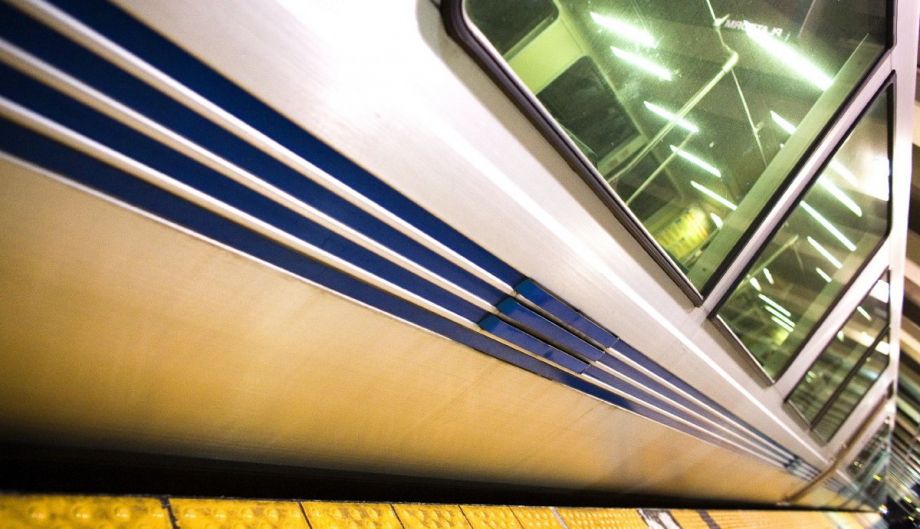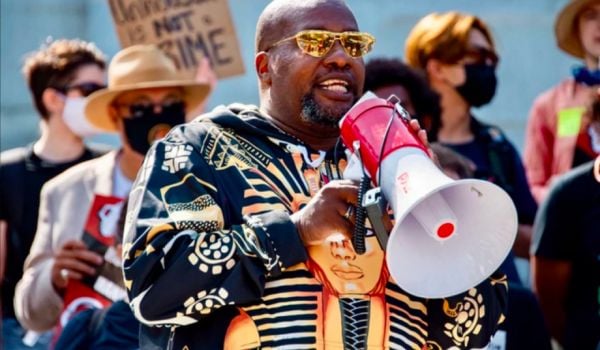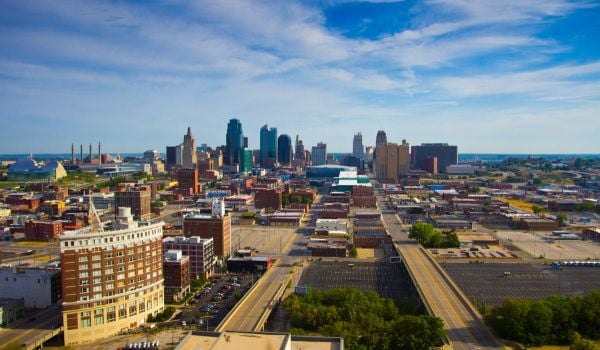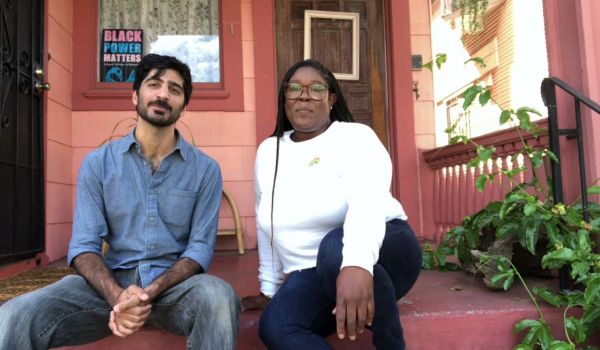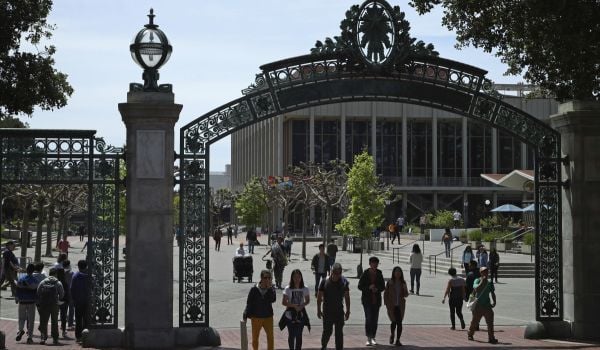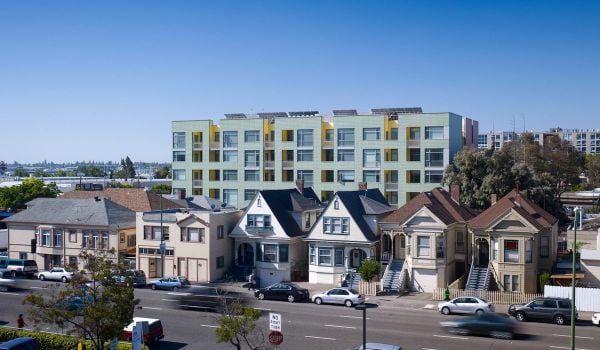There are a lot of reasons that Berkeley Mayor Jesse Arreguín is excited for San Francisco Bay Area Rapid Transit to build homes on a series of parking lots around the North Berkeley BART Station.
Most obviously, the whole Bay Area — the whole state of California — is facing an acute housing crisis. North Berkeley specifically has seen little residential development over the years, he says, with exclusive housing patterns going back to racist policies like redlining and restrictive deed covenants. And then there’s the urgent need for every city, everywhere, to reduce greenhouse gas emissions, and placing future residents close to public transit is a good way to reduce car travel.
“Right now it’s a parking lot, and it is an incredible amount of land that’s available for us to create new homes …” Arreguín says. “I think there’s kind of a symbolism and beauty in that — in how that singular action can make a really meaningful impact in Berkeley’s efforts to address climate change.”
Conversations about developing the eight-acre property around North Berkeley Station date to the end of 2017, according to a summary that Arreguín’s office provided to the Berkeley City Council earlier this year. Public planning and “visioning” sessions were held in March and October of 2018. Earlier this month, as Berkeleyside reported, the city council voted unanimously to authorize a memorandum of understanding (MOU) with BART that will create guidelines for planning the future of the site. The site could end up being built out with hundreds of new housing units, at least a portion of which will be affordable for low-income residents.
Technically, the city isn’t negotiating with a developer yet, but rather crafting zoning policies that will determine how the land can be used. Last year, California enacted a law (Assembly Bill 2923) that requires BART to create transit-oriented development (TOD) guidelines for all of its properties adjacent to transit stations with minimum height and density provisions, meant to establish more housing close to public transit. Those zoning guidelines will become operative as soon as the cities home to those stations approve them or by July 1, 2022, whichever is sooner.
Berkeley wants to get ahead of the deadline and put North Berkeley Station near the top of BART’s development list, Arreguín says. Doing that requires residents to come to some sort of agreement about the height of the project, how much parking should be provided, and what portion of the units will be affordable. As is the case with most large-scale developments, height and parking have been points of contention. In April, Arreguín and Berkeley City Councilmember Rashi Kesarwani wrote a letter to the sponsor of AB 2923 asking whether they can build less height, as long as the site exceeds the minimum density requirements. Arreguín says he wants the site to provide more housing than is required. He also says that parking should be limited only to space for commuters who need to drive to the station.
“I’m of the personal opinion that there should be no parking for the new residents at North Berkeley BART,” he says. “It makes no sense to have parking. It’s right at a BART station.”
Some community members are also calling for 100 percent of the housing units to be affordable. That’s a good goal, but it could pose serious challenges for BART and whatever developer ends up building out the property, says Abby Thorne-Lyman, the transit-oriented development program manager at BART. BART has a goal of having at least 35 percent of new housing units at its sites be affordable, prioritizing low- and very low-income families. But its developers have to provide affordability the way every other developer does, Thorne-Lyman says — by pulling together various public funding sources to provide lower-cost and subsidized units.
“These are communities that have been gentrifying for decades, and they want to see a lot of affordable housing in these areas to offset what has taken place,” Thorne-Lyman says. “We are going to have to develop some new models for how to do that, because no master developer is going to come in and take on all that risk.”
The BART board was officially neutral on AB2923 before it passed, but Thorne-Lyman says it’s now looking at the possibilities on all of its properties and putting together a 10-year development plan. A lot of communities were angry about the bill prior to its passage, she says, feeling that it amounted to a state takeover of local zoning control (similar to some perspectives on a recent proposal to add more density around transit nodes across the state). BART has just finished meeting with all 22 jurisdictions where its developable properties are located, she says. And it’s prioritizing projects in the areas that are most amenable to development that is in line with its TOD standards. That plan probably won’t be released for another six months, she says.
More developers are able to work with BART on transit-oriented projects than they were when the TOD program launched in the 1990s, Thorne-Lyman says. Land has gotten more valuable and the housing shortage has gotten worse. But BART’s standards for affordability and open space are high.
“We still struggle, because smaller-scale developers who do more boutique projects that are of the quality that BART would want — with [public plazas], affordable housing, commercial space really serving local community wishes and desires — a lot of those developers do not necessarily have the experience doing these massive negotiations and taking on the massive risk,” Thorne-Lyman says. “But what BART does have going for it is that we can sit and hold our land for as long as it takes.”
Thorne-Lyman also lives in North Berkeley, and says that until very recently, there was no consensus around doing anything at all at North Berkeley Station. The fact that community members are now wading through the details of height and massing shows how much the conversation has changed.
As Arreguín says, “To get a unanimous vote of the Berkeley City Council is unprecedented, and that is a testament to the growing recognition that this is a good location.”
This article is part of Backyard, a newsletter exploring scalable solutions to make housing fairer, more affordable and more environmentally sustainable. Subscribe to our weekly Backyard newsletter.

Jared Brey is Next City's housing correspondent, based in Philadelphia. He is a former staff writer at Philadelphia magazine and PlanPhilly, and his work has appeared in Columbia Journalism Review, Landscape Architecture Magazine, U.S. News & World Report, Philadelphia Weekly, and other publications.
Follow Jared .(JavaScript must be enabled to view this email address)



